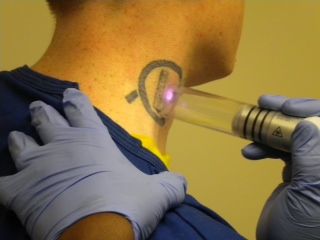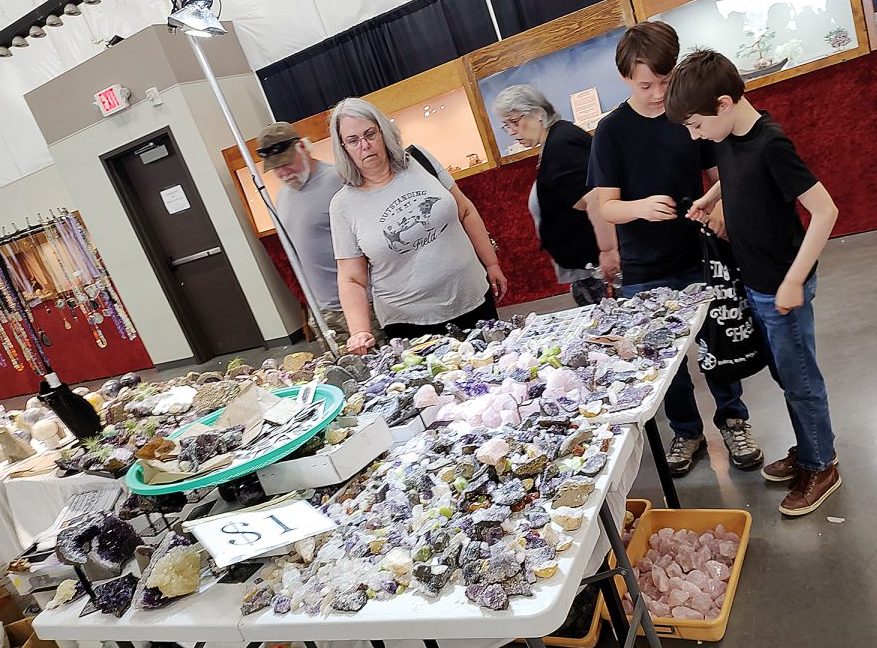TRCI looking into tattoo-removal program
Published 4:03 pm Monday, December 1, 2014

- An inmate in the Los Angeles County Jail system gets a tattoo removed using a laser tattoo-removal machine. The jail has had a tattoo-removal program since 2012, where it has helped more than 2,000 inmates remove their gang- and crime-related tattoos.
In the near future, when inmates are released from Two Rivers Correctional Institution, they will not only have the opportunity to start fresh, they may also be rid of any physical reminders of their criminal past.
The prison hopes to be one of several state correctional institutions in Oregon to start a tattoo-removal program that would rid inmates of gang-, violence- and criminal-related tattoos. One thing, however, still stands in the way: funding.
Ann Shindo, the communicable disease and intervention coordinator for the Oregon Department of Corrections, said she has been working on starting a tattoo-removal program for all state institutions for the past two years. She said she has been researching potential grant opportunities, donations and the type of equipment needed for such programs.
At the same time, for the last year and a half, without Shindo’s knowledge, TRCI correctional officer C. Stensrud has been doing the same thing at TRCI. The two recently met to discuss the possibility and how they can combine their efforts to secure funding and other resources for such a program.
Shindo said, on average, laser tattoo-removal machines cost anywhere from $60,000 to more than $100,000. To provide the program across the state, she said, ODC is looking to purchase at last two laser machines, which would rotate from institution to institution.
So far, Shindo said she has been unsuccessful in identifying funding opportunities, but she also has limited time to do so. The same applies for Stensrud. Shindo said she sets aside time at least once per week to look for funding opportunities, but it is hard with limited staff working on the project.
“It is just me looking for the funds,” Shindo said. “There is no ‘we’ on this. We don’t have a subcommittee working on finding funding for this program.”
Shindo said having a tattoo program would not only provide inmates a fresh start in their job hunting experience after they get out of prison, but having their tattoos removed would also eliminate physical reminders of their former gang or criminal affiliations.
“You are more likely to get employment if you don’t have a tattoo on your face saying you killed someone or have hate written across your knuckles,” she said. “At the same time, they are less likely to be reintroduced into gang life. When you have that tattoo, and gang members see it, they might approach you. If you say no, you can be harmed. The impact that this would have on inmates across the state would be huge.”
In the two years researching the project, Shindo has written up a detailed plan for how the program could operate. She said inmates would be selected based on their tattoo content and location, medical history and other factors, and the treatments would take place once about every six to eight weeks. She said to get a tattoo removed, it takes anywhere from six to more than 10 treatments.
Shindo said she would ask that inmates having the procedure done provide about $5, which would go toward sustaining the program and routine maintenance for the machines.
“That way it could be self-sustaining,” she said of the program.
Shindo said the inmates feel some pain when getting the procedure done, but it is manageable. She said, from what she has heard, the pain is very concentrated and is slightly more intense than when getting a tattoo. She said each procedure is done in minutes.
Stensrud said she has already found people in Hermiston and the surrounding communities who are willing to donate their time and services for such a program; it is just a matter of obtaining the machines.
Dr. Richard Flaiz, of E.N.T. Facial Plastic and Laser Center, said he would be happy to donate his time and resources, but there isn’t enough demand in the Hermiston area for him to purchase such a machine.
“It isn’t a cheap piece of equipment, but I do think it is a worthwhile program,” he said. “If they get the machine, we can provide the service.”
Shindo said she has talked to organizers of several programs in the state that offer tattoo removal at low cost to inmates who have been recently released, such as the Outside In program. She said she is unaware of any state correctional institutions that have a similar program, but the Los Angeles County Jail has a tattoo-removal program that has been highly effective.
Cynthia Murphy, a custody assistant at the Los Angeles County Sheriff’s Department, said the program has been very successful at the jail since it started offering the program in 2012. She said the department has no specific data about how it has affected recidivism rates at the jail, but it has shown promise with inmates being able to reconnect with family members, have better job opportunities and more.
“We have had enormous success with it,” she said. “It is extremely popular.”
She said since the program started in 2012, approximately 2,000 inmates have been treated.
Murphy said the educational programs also benefit inmates, but their tattoos may still hold them back when they go to apply for jobs.
“We can provide as many educational avenues to take advantage of, but when they get out into the real world, who is going to hire somebody with tattoos all over their face and chest?” she said. “It is almost like they get to wipe their slate clean. We are seeing a huge difference. Inmates are now making themselves more employable, and they just feel clean.”
Two Rivers Correctional Institution houses more than 1,800 male inmates, where a large number have tattoos declaring gang affiliation or are violence-related, and many would like to have them removed.
Shindo said if anyone knows of an agency that would provide funding or services for the program, they should contact her at Ann.A.Shindo@doc.state.or.us.
“It would really help a lot of inmates get a second chance to live healthy and productive lives,” she said. “About 95 percent of the inmates return home. Wouldn’t it be great if they could go home healthy in mind, body and spirit?”





